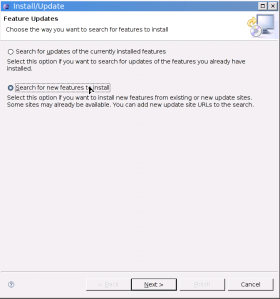
I’ve been playing arround with XML and XSL transformations recently. XSL transformations may be very useful for:
- transforming XML to XML with different structure.
- converting XML to another well-known formats, as CSV or SQL. Then, you can pipe the output to another tools like awk/sqlplus or perform some complex querys in a RDBM.
- simple ordering / extracting node-values from the XML. Do you want to extract only a numeric value from a SOAP-response, if there is no a “soap fault” element?
All the above possible usages make XSL a powerful tool to deal with XML specially when integrating applications.
So, lets see a sample XML file, storing some info about music CDs:
<?xml version="1.0" encoding="ISO-8859-1"?>
<catalog>
<cd>
<title>Empire Burlesque</title>
<artist>Bob Dylan</artist>
<country>USA</country>
<company>Columbia</company>
<price>10.90</price>
<year>1985</year>
</cd>
<cd>
<title>Hide your heart</title>
<artist>Bonnie Tyler</artist>
<country>UK</country>
<company>CBS Records</company>
<price>9.90</price>
<year>1988</year>
</cd>
....
</catalog>
And a Java class to perform XSL transformation:
public static void main(String[] args)
throws FileNotFoundException,
TransformerException {
File inXMLFile = new File("input.xml");
File inXSLFile = new File("transformation.xsl");
File outXMLFile = new File("output.xml");
javax.xml.transform.TransformerFactory tFactory =
javax.xml.transform.TransformerFactory.newInstance();
// Get the XML input document and the stylesheet
javax.xml.transform.Source xmlSource =
new javax.xml.transform.stream.StreamSource(inXMLFile);
javax.xml.transform.Source xslSource =
new javax.xml.transform.stream.StreamSource(inXSLFile);
// Generate the transformer.
javax.xml.transform.Transformer transformer =
tFactory.newTransformer(xslSource);
// Perform the transformation, sending the output to the response.
transformer.transform(xmlSource,
new javax.xml.transform.stream.StreamResult(outXMLFile));
}
In the code above, there are three files:
- input.xml: XML input file. We are using the CD catalog as input for our tests.
- transformation.xsl: XSL sheet. The cornerstone of this test.
- output.xml: The resulting XML from the XSL processing will be stored here. The output may no be an XML file (csv,txt,…) Continue reading →










